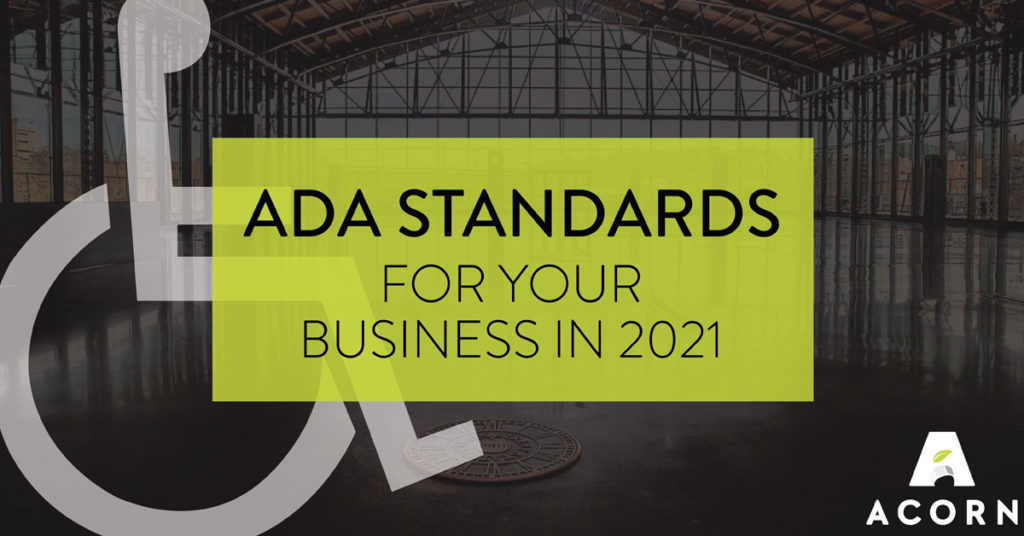
The Americans with Disabilities Act (ADA) outlines standards to ensure public spaces are easily accessible for all individuals. It was established in 1990 to prevent discrimination towards those with physical or mental disabilities. The ADA legislation has undergone amendments since its inception, and in 2010, the Department of Justice published the ADA Standards for Accessible Design.
The 2010 Standards outlines specific regulations and architectural standards for public environments. Below, we outline some of the main categories the 2010 Standards addresses in order to help increase awareness of major areas for accessibility.
Wheelchair Routes
Ensure accessibility within your space by recognizing physical wheelchair routes. By acknowledging if there are any architectural barriers in your built environment, you can evaluate how easily individuals with varying abilities can navigate your space.
Elevator Accessibility
If your physical space has multiple levels, elevator accessibility is crucial to ensure that your environment is compliant with ADA Standards. In addition to having an elevator, the ADA requires signage to be at certain placements and heights in order to provide ease of access and navigation.
Changes in Levels
The 2010 ADA Standards also regulates any changes in flooring levels, whether that is a sloping elevation or any raised surfaces along flooring. The standards outline specific measurements and details for level changes. Here at Acorn, we focus on this aspect of the ADA in order to ensure that any signage inlays and flooring graphics we design comply with the legal standards.
Handicap Parking
Handicap parking is crucial for accessibility to your building or physical space. By outlining the specifications for handicap parking, the ADA standardizes how individuals with disabilities can easily access businesses from their vehicles. Under this section of the 2010 ADA Standards, they also require that all handicap parking is designed by the International Symbol of Accessibility.
Raised Characters on Signage
Braille lettering is a major focus of the 2010 ADA Standards to prevent discrimination towards individuals who may be blind or have visual impairments. Typesetting of Braille on signage in your built environment must be constructed by a qualified expert to ensure accurate information and installation.
Sign Height and Location
Signage regulation is crucial throughout the 2010 ADA Standards, which is why we at Acorn have dedicated ourselves to being ADA signage experts. The ADA requires signage installations to follow specific height and location standards, and we focus diligently on these standards when we install signage for our clients.
Signage Finish and Contrast
Color combinations between the background and text on signage is important to ensure visibility of the intended message. The ADA outlines exact Light Reflectance Values (LRV) based on color contrast percentages to determine if color combinations are compliant or not. Our team consults these finish and contrast regulations when we design signage for our clients to ensure that the signage we fabricate is ADA compliant.
In 2021, ensure that your building and signage follows the 2010 ADA Standards to not only be in compliance, but also to make your built environment as accessible as possible. If you have any questions about ADA compliant signage, we would love to discuss your signage and business needs with you. Contact us today at https://acornsign.com/contact/.
The above list is an overview of some of the topics addressed in the 2010 Standards, but is not a comprehensive list. Consult an ADA legal expert to fully comprehend the impact of the Americans with Disabilities for your business. Read the full 2010 ADA Standards here: https://www.ada.gov/regs2010/2010ADAStandards/2010ADAstandards.htm#pgfId-1011065
Sources
